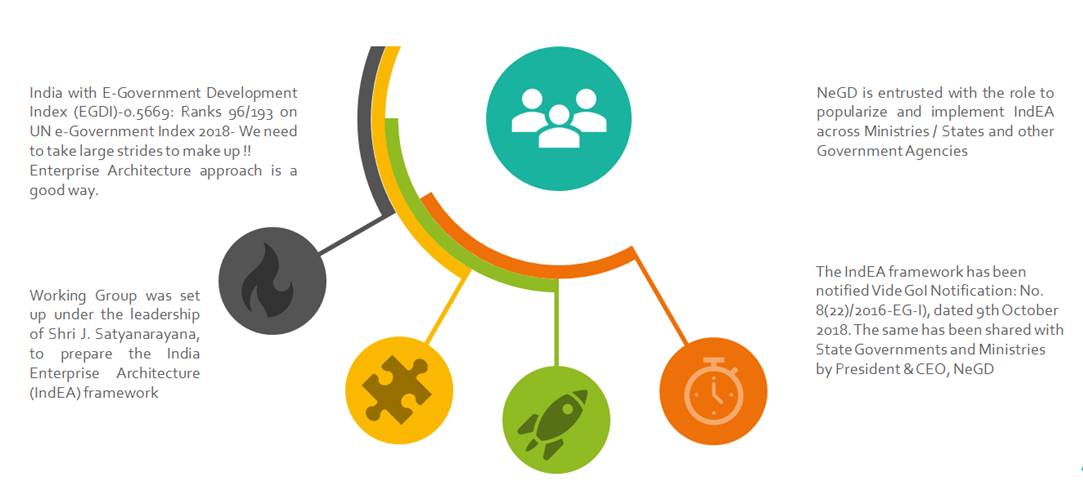National eGovernance Division has been entrusted with the mandate to form a division called India Enterprise Architecture (IndEA) to drive the initiative across Government Ministries, States and other Agencies.
Under the overarching vision of Digital India Programme, Government of India aims to make all Government services digitally accessible in an integrated manner to citizens through multiple channels like web, mobile and common service delivery outlets. Also, users have become tech-savvy and now demand faster delivery of services which match with those of private sector and other eGovernance delivering Nations across the world. The United Nations eGovernance survey emphasized on a whole-of-government approach, policy integration and use of Big Data Analytics to provide better governance to citizens. These trends require breaking of sectoral barriers and silos & re-architecting the Government as a single enterprise. Accordingly, a working group was constituted by Standardisation Testing and Quality Certification (STQC), MeitY under the leadership of former IT Secretary, Shri J. Satyanarayana, to develop the India Enterprise Architecture (IndEA) framework.
IndEA provides a generic framework, (based on The Open Group Architecture Framework -TOGAF) comprising of a set of architecture reference models, which can be converted into a Whole-of-Government Architecture for India, Ministries, States, Govt. Agencies etc. The IndEA framework is based on federated architecture approach and recognizes the need to accommodate both greenfield (new) and brownfield (existing / legacy) eGovernance initiatives.

During implementation of IndEA as well as in the light of advancement of technology, a need was felt to revise the IndEA document and accordingly, after multiple rounds of meetings and detailed deliberations, draft InDEA 2.0 document has been formulated (report given below).
India Digital Ecosystem Architecture (InDEA) 2.0 harmonizes and builds upon the architectural frameworks developed during the last few years. While codifying their principles, it provides a pragmatic approach to realize the concept of open digital ecosystems in an integrated and collaborative manner. It recommends a value-driven approach, a focus on capability building and above all, a preference to ‘enabling’ rather than ‘building’. It is an evolving and dynamic framework with continuous improvement as its mantra. The InDEA 2.0 framework enables establishing such a right balance in all the ongoing architectural initiatives and accelerates the realization of the vision of Digital India.
